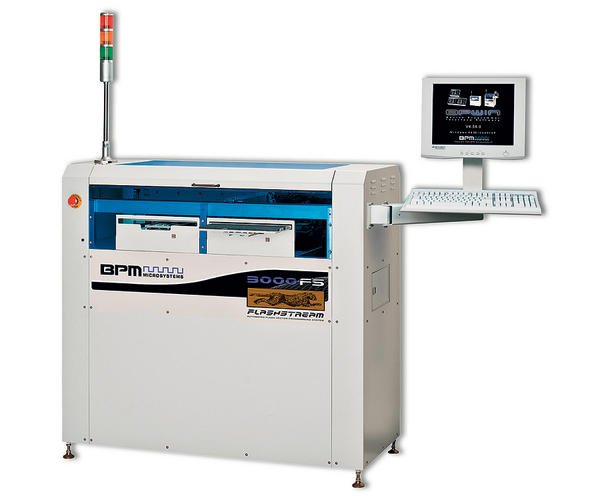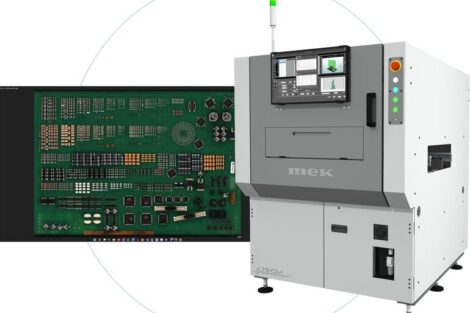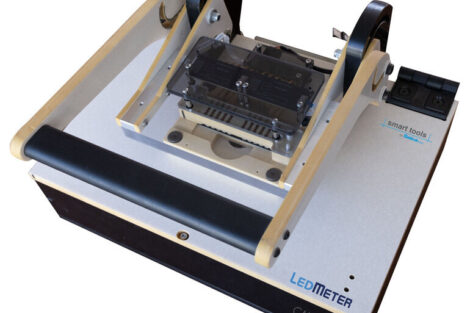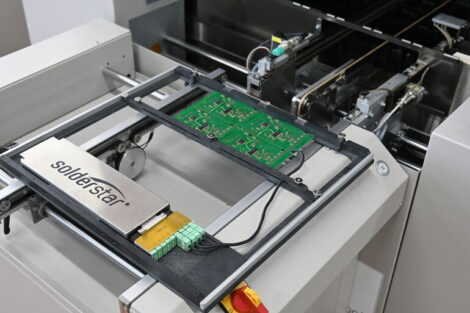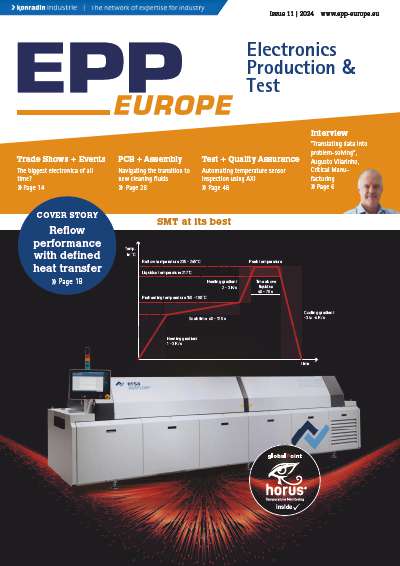BPM Microsystems will display for the first time its latest Flashstream automated programming technology, the 3000 FS, on distributor PB-Technik stand at Productronica. Designed specifically to solve excessive programming times in current in-system, JTAG and in-circuit programming production methods, the 3000 FS is modeled from the current BPM 3710 handler and contains four Flashstream programming sites. Rated at 1050 devices per hour, the flash programmer is flexible enough to handle parts in tray, tube or tape for device input or output.
“Combining these two technologies gives the 3000 FS automated flash programmer the ability to produce a fully programmed 512 Mb NAND Flash memory device every 3.4 seconds or 1050 devices in an hour” says Tim Nolte, director of global marketing. “Our customers will get the benefit of a robust device handling solution combined with Flashstream’s speed to meet the challenges of large flash memory programming in electronics manufacturing.”
Also on display will be the HelixFS, modeled after the BPM Helix table-top handling system. Rated at a delivery of 800 devices per hour, the HelixFS gives customers the option to utilize Flashstream sites or purchase and use BPM’s current universal site technology that supports over 26,000 device part numbers. The table-top handling system has the ability to switch between the dedicated flash sites and universal sites, to adapt to production needs.
The manual Flashstream as well as the universal device programmers will also be on display with demonstrations of 1 Gb (gigabit) ST Micro NAND device being programmed in 19.8 seconds with a full data pattern.
The Flashstream technology, that was introduced as a manual programming product in April of 2007, reportedly offers the fastest flash programming of NAND and NOR flash memory in the market today. The speed is due to the creation of a proprietary co-processor technology developed by BPM called Vector Engine. This technology uses a proprietary co-processor design to hardware accelerate flash memory waveforms during the programming cycle. Faster speeds are achieved through synchronous operations that eliminate the dead times when the DUT waits on the programmer. The result is programming near the theoretical limits of the silicon design – the faster the device, the faster the device is programmed.
Productronica, Stand A4.380
EPP Europe 476
Share:




